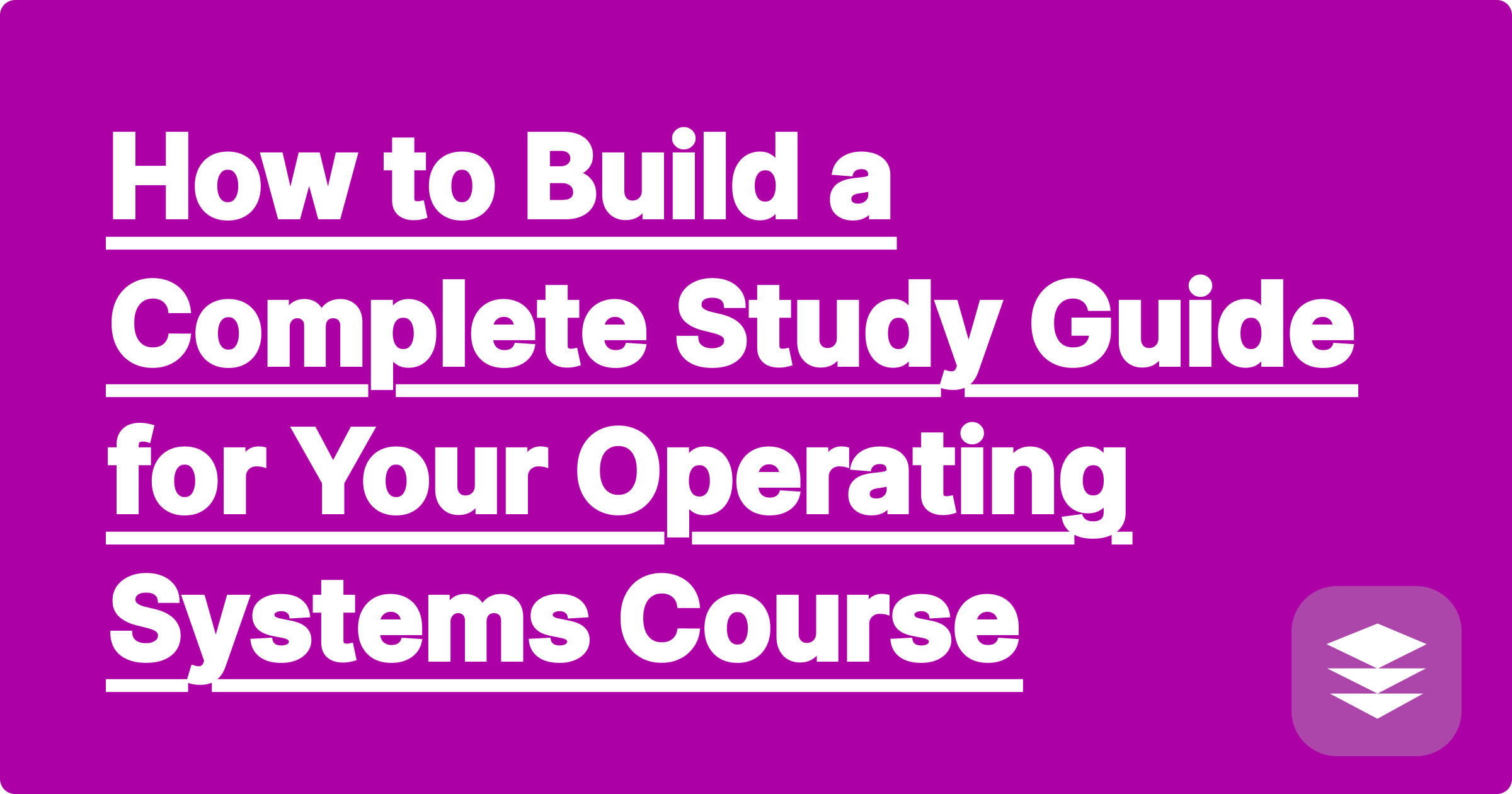
Operating Systems (OS) is a fundamental and fascinating course in computer science. It's the class that explains the "magic" happening between your code and the computer's hardware. However, it's also incredibly dense and abstract. You're dealing with concepts like processes, threads, scheduling algorithms, memory management, and synchronization primitives (like mutexes and semaphores) that you can't physically see or touch.
Because the course is so concept-heavy, a high-quality operating systems study guide is not just helpful—it's essential for survival. You need a way to organize the dozens of abstract concepts, compare different algorithms, and understand complex processes. Manually creating such a guide from lecture notes and a textbook is a massive undertaking.
The smartest way to create your OS study guide is to build it throughout the semester using an AI note taker and cheatsheet builder like GPAI Cheatsheet.
The Process:
[Image: A screenshot from the GPAI Cheatsheet builder showing organized blocks for "CPU Scheduling," "Memory Management," and "Concurrency," created from uploaded OS lecture notes. Alt-text: An AI creating an operating systems study guide.]
One of the most powerful features is the ability to create comparison tables. You can prompt the AI: "Create a table comparing FCFS, SJF, and Priority scheduling algorithms. Include columns for their pros, cons, and potential for starvation." This turns a confusing set of options into a clear, scannable chart.
The study guide built with the cheatsheet tool provides the concepts. When you need to understand the application, you turn to the solver.
By following this process throughout the semester, you'll arrive at finals week with a comprehensive, organized, and deeply personalized study guide. Your review process becomes a simple re-reading of this master document, rather than a panicked scramble through months of disorganized notes.
A: Yes. You can upload an image of the diagram (e.g., the Ready, Running, Waiting states) and ask the AI to explain the transitions between each state, such as what causes a process to move from "Running" to "Waiting."
A: Absolutely. The concepts covered in an OS course are classic technical interview topics. Having a well-organized cheatsheet is an excellent resource for refreshing your memory on topics like deadlock or virtual memory before a big interview.
Operating Systems is a challenging but rewarding course. By using an AI assistant to continuously organize, summarize, and explain the abstract concepts, you can build a solid foundation of knowledge that will serve you well in your exams and your future career as a software engineer.
[Build your ultimate OS study guide today. Try the GPAI Suite and organize your course for success. Sign up for 100 free credits.]
A Step-by-Step Guide to Your First MATLAB/Simulink Project with AI
How to Design and Analyze a Simple RLC Circuit with an AI Assistant
The Ultimate Cheatsheet for Your Thermodynamics Final Exam
From Free-Body Diagram to Solution: Solving Statics Problems with AI
How to Ace Your Signals and Systems Class with an AI Fourier Analyzer
Your Personal Assistant for Fluid Mechanics Homework
How to Create an Algorithm Analysis (Big O) Cheatsheet with AI
A Guide to Writing and Verifying Mathematical Proofs with AI
How to Build a Complete Study Guide for Your Operating Systems Course
Using an AI to Solve and Explain Probability Distribution Problems